Testing with the first female crash test dummy reveals significant differences between the sexes (8 photos)
Having a driver's license has long been commonplace, but Cars remain one of the most dangerous means of transportation. To reduce the chance of injury or death, car manufacturers use crash test dummies, but until now these dummies have always depicted male drivers. Now Swedish engineers have developed a female crash test dummy, and early tests showed unexpected results. 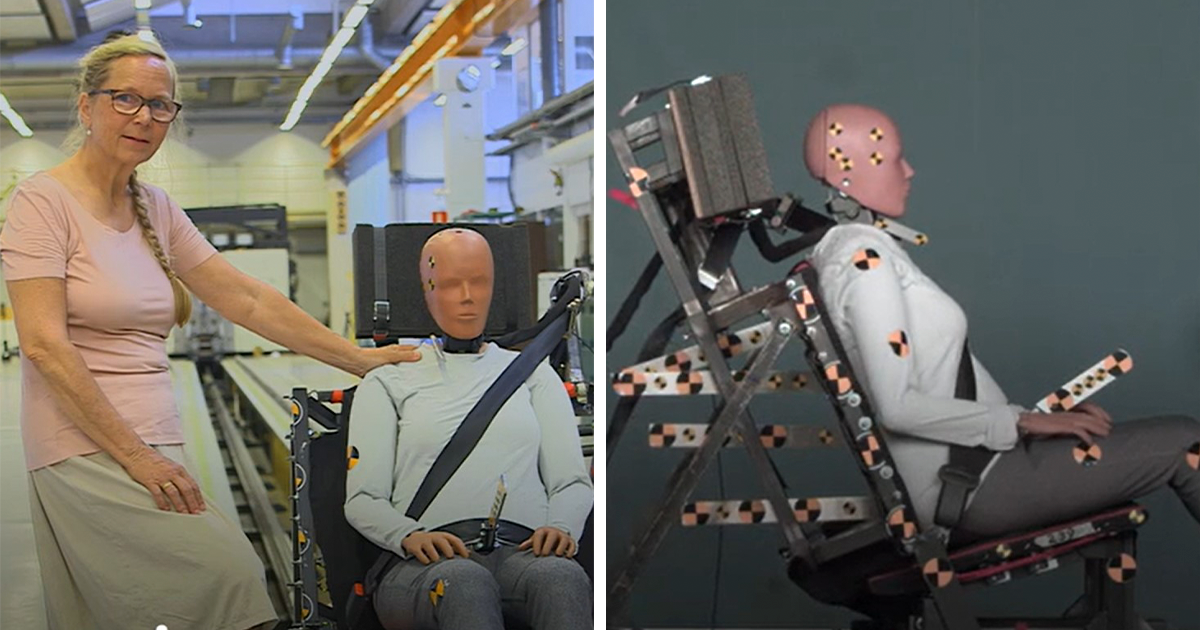
A study conducted in 2019 by scientists from the Center Applied Biomechanics University of Virginia showed that belted women are at risk of serious injury in a frontal collision is 73% higher than for men wearing seat belts.
Although more men die each year in car accidents in Overall, women are more likely than men to be killed or injured in accidents of the same severity. Data from the National Administration Highway Traffic Safety (NHTSA) in the United States showed that seat belts women in the driver's or front passenger's seat die in car accidents 17% more often than men.
So what's the deal? Why is it more dangerous to be a female driver than male driver? It turns out that the main indicator is the difference in body structure. Ever since the first crash test dummies, car companies are required to test vehicle safety only with the help of mannequins for crash tests modeled after the average male. 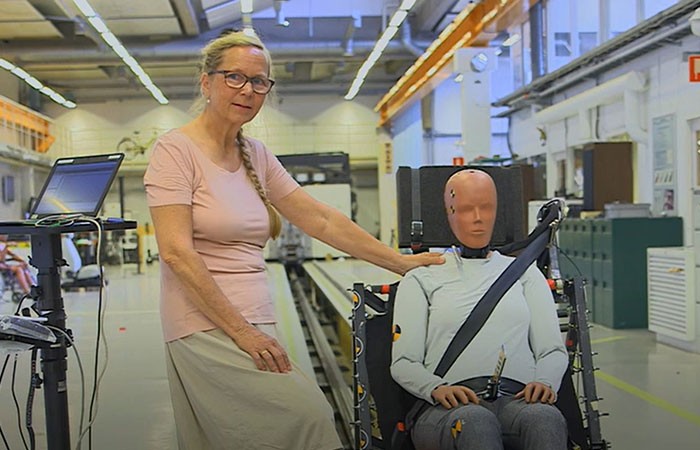
“Obviously we know a lot of differences between men and women in biomechanical terms. These differences... can change what how seat belts interact with the body and its underlying skeletal structures,” explained Jason Foreman, researcher biomechanics from the University of Virginia.
In addition, according to Smithsonian magazine, women's the body is on average smaller and lighter than the male, with differences in muscle strength, shape of the trunk, hips and pelvis. All of these factors affect how bodies react to accidents, especially when they are in vehicles means that are not designed to protect these bodies most effective way.
An excellent example of this is the case of Maria Weston Kuhn, which joined the UN Global Youth Coalition for road safety. Having survived a car accident, she pointed out that the seat belt is “designed to stop a man who was thrown forward by his hard thighs bones. In my case it didn't happen. It slid above my thighs pressed my intestines against my spine and tore it apart.” 
To represent the average female body during crash tests conducted by the National Highway Traffic Safety Administration movement, a smaller version of the male mannequin is usually used 150 centimeters tall and weighing 49 kilograms. However, these proportions are refer to a 12-year-old girl, not 95% of adult women. just for comparison: the average height and weight of an American woman at the age of 20 is about 162 centimeters and 77 kilograms.
Now, Swedish researchers led by Dr. Astrid Linder designed a mannequin that better represents the feminine body. The mannequin is 160 centimeters tall and weighs about 62 kilograms, which slightly above the ideal BMI for women of this height. 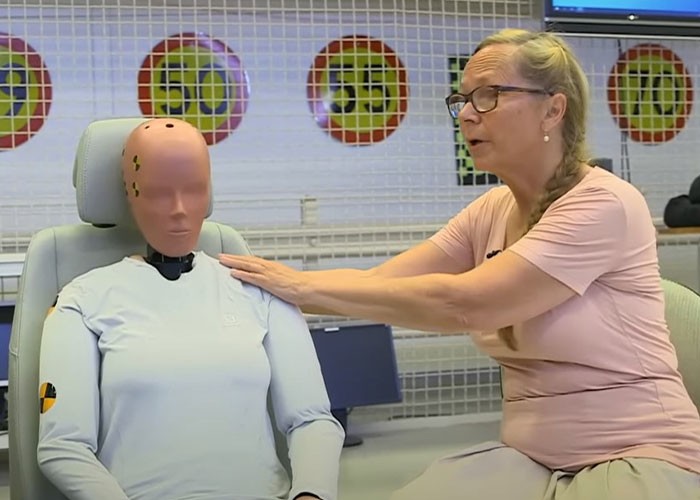
However, the main difference between male mannequins and this new feminine lies in their form. Engineers focused on the shape of the chest cells, and also gave the female mannequin less stiffness of the joints along compared to its male counterpart. “Women have less muscle and less overall strength, which corresponds to less stiffness between the joints, ”explained NPR Dr. Linder. 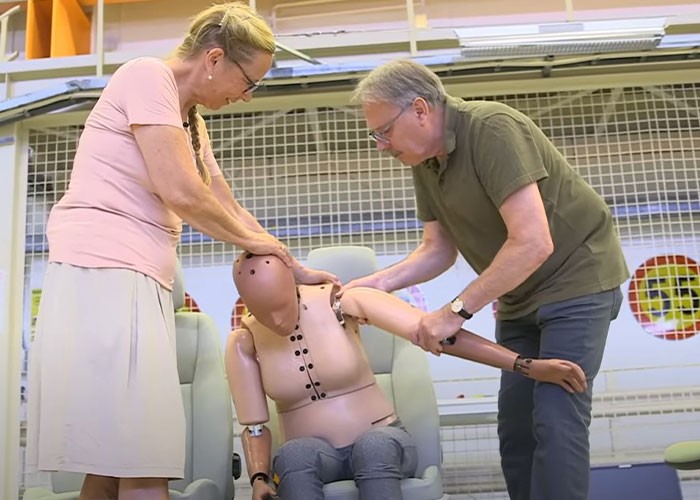
The manikin is then fitted with sensors to measure force, acting on every part of the body during a car accident. Team Dr. Linder paid great attention to crash testing rear impact of low severity, since women are more likely to suffer from whiplash injury than men.
“We tested with different seats and found that seats behave differently depending on whether these seat of a man or woman,” Dr. Linder told NPR. 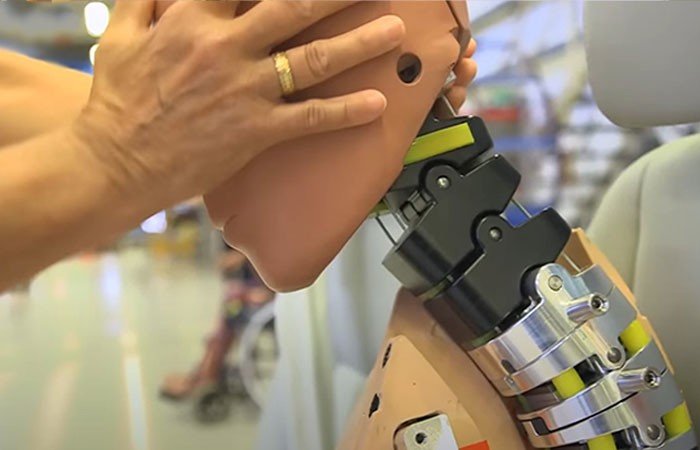
While car safety has improved significantly over the past few decades, she "doesn't really take into account attention to differences between men and women," BBC News told Christopher O'Connor, CEO of a manufacturing company crash test dummies Humanetics. The next step to include women's dummies in vehicle safety tests can lead to “safer cars with safer airbags safety, with safer seat belts, with more safe compartments for passengers of different sizes. 
Of course, a natural question arises: why did it take so long? a lot of time - 60 years? And, as Dr. Linder says, celebrate the victory anyway, it's still early. Historically, driving was considered masculine occupation, so it made sense to test on dummies, representing the majority of drivers. However, times have changed. It's 2022 now; it's time to protect all drivers, especially those who at the highest risk of injury.
“We know from injury statistics that, look at accidents of low severity, women are exposed to higher risk. So, to make sure you have identified the places, providing the best protection for both parts of the population, we it is definitely necessary that the part of the population exposed to the greatest risk, has been presented,” Dr. Linder told the BBC. 





















